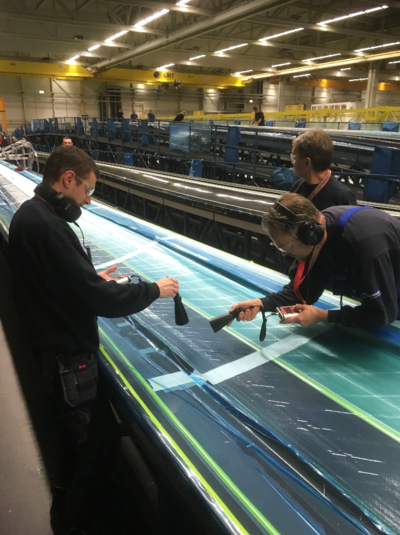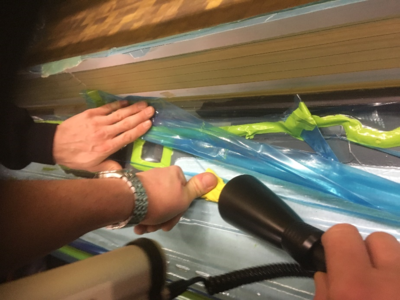Application
Composite materials are becoming increasingly important in the industrial sector due to their material properties. The manufacture of components from CFRP and GFRP often uses the vacuum infusion process. An example of a component produced on this way is the rotor blades used on wind turbines.
Modern wind turbines are being fitted with larger and larger rotor blades, in order to increase energy generation and optimize the plants. The rotor blades must be able to withstand heavy loads. This requires an efficient production process that also meets the high quality requirements.
Challenge
During the manufacture of rotor blades, the structural mold is lined with composites and reinforcement materials. In a subsequent process, the mold is sealed with film, the vacuum is applied (evacuation) and the mold is filled with resin while the vacuum is maintained. Any leaks in the film during this process can lead to structural faults. For example, any areas that are not impregnated can have a negative impact on the durability of the rotor blade.
Leaking areas create detectable noises in the ultrasonic range through the ingress of air. Therefore, using ultrasound testing technology, these leaks can be found during the filling process and be eliminated before the resin is hardened. Costly reworking or follow-up damage during operation is avoided.



